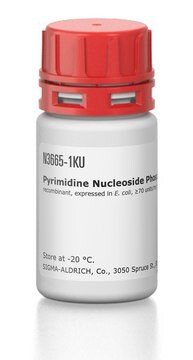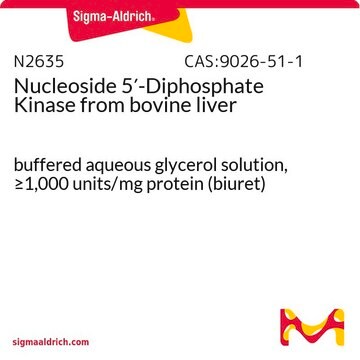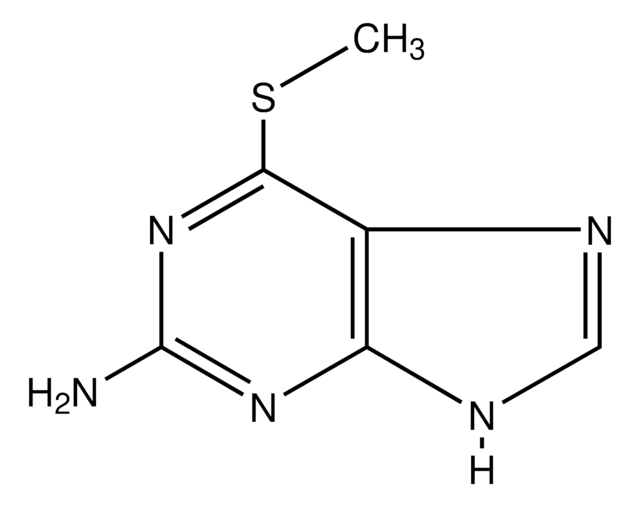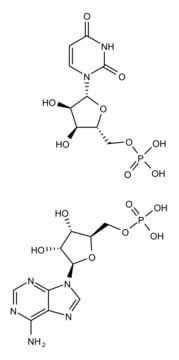N9914
Polynucleotide phosphorylase from Synechocystis sp.
recombinant, expressed in E. coli
Synonym(s):
PNPase, Polyribonucleotide Nucleotidyltransferase
About This Item
Recommended Products
biological source
bacterial (Synechocystis sp.)
Quality Level
recombinant
expressed in E. coli
description
Histidine tagged
assay
90% (SDS-PAGE)
form
solution
specific activity
≥500 units/mg protein
mol wt
85 kDa
technique(s)
cell based assay: suitable
suitability
suitable for molecular biology
application(s)
cell analysis
shipped in
dry ice
storage temp.
−70°C
Looking for similar products? Visit Product Comparison Guide
General description
Application
Biochem/physiol Actions
Unit Definition
Storage Class
12 - Non Combustible Liquids
wgk_germany
WGK 1
flash_point_f
Not applicable
flash_point_c
Not applicable
Certificates of Analysis (COA)
Search for Certificates of Analysis (COA) by entering the products Lot/Batch Number. Lot and Batch Numbers can be found on a product’s label following the words ‘Lot’ or ‘Batch’.
Already Own This Product?
Find documentation for the products that you have recently purchased in the Document Library.
Customers Also Viewed
Our team of scientists has experience in all areas of research including Life Science, Material Science, Chemical Synthesis, Chromatography, Analytical and many others.
Contact Technical Service











